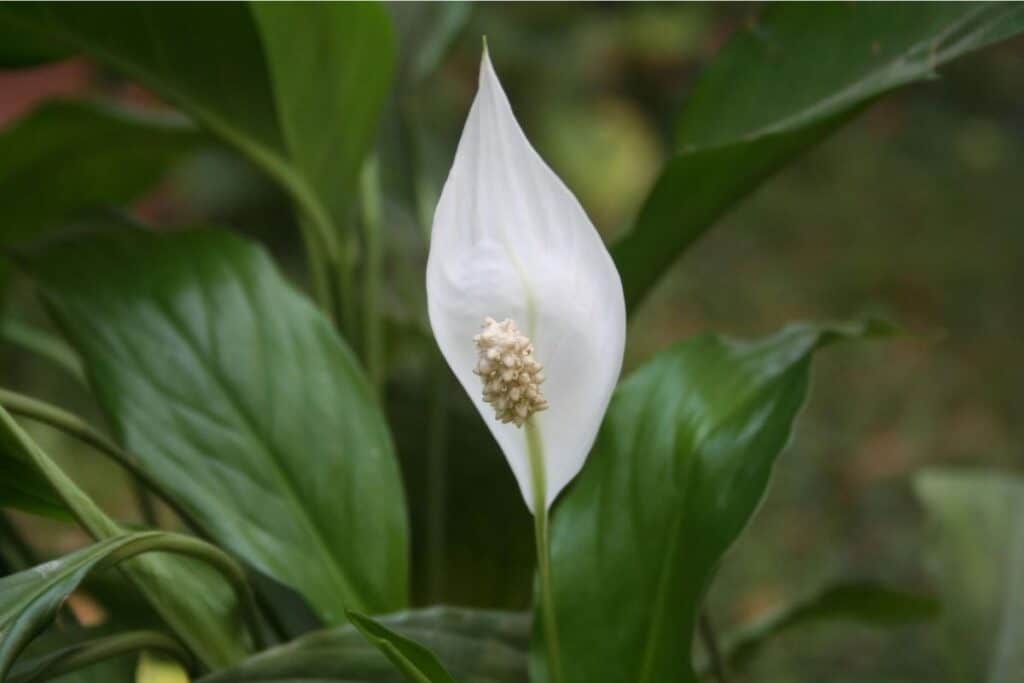Topping the list of the best house plants to grow of all time is the Peace lily. Bearing foliage and flowers that flourish under various interior conditions, this plant does not only bring life to a room but also helps cleanse the air of pollutants and toxins. It does not require too much attention to stay healthy and lasts for years making growing a peace lily indoors such a delight!
What is a Peace Lily Plant?
Peace lily is technically not a lily. It is a member of the Arum family and goes scientifically as Spathiphyllum spp. It has wide dark-green glossy leaves but unlike true lilies, peace lily bears flowers unique to arums.
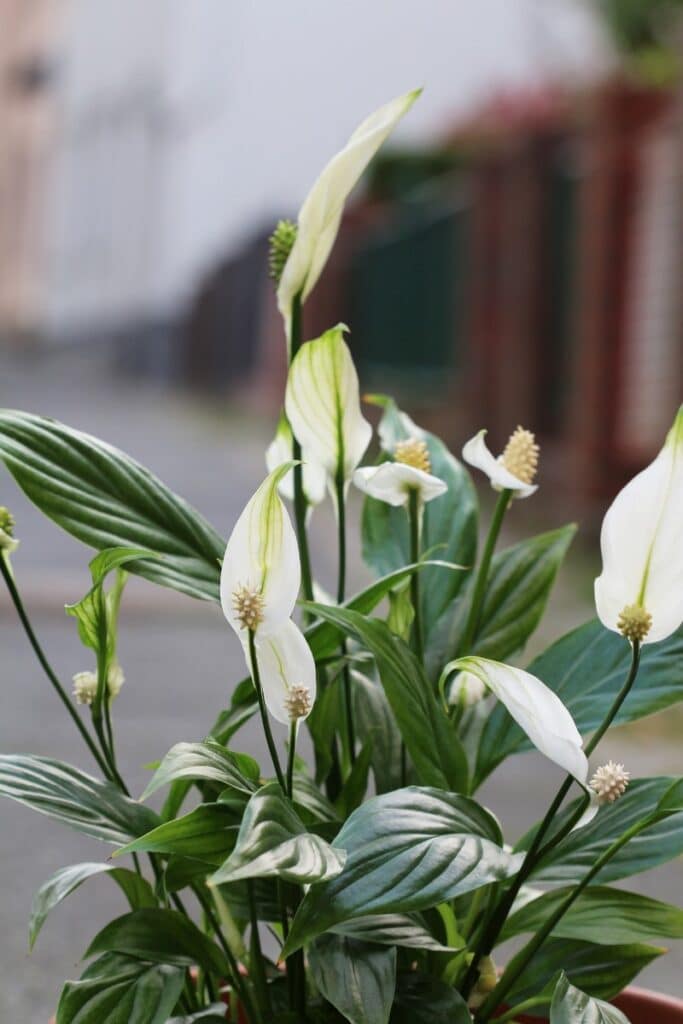
They have an outer white bract called “spathe” and inner long white flower cluster called “spadix” (1). These flowers are long lasting and appear every few months, sometimes more frequently given the optimum conditions. This makes it one of the best indoor plants to grow.
This plant originated from Southeast Asia and Central America where they grow in tropical rainforests. A single plant can reach a height of up to 50 cm and some species and varieties can even grow higher. Spathiphyllums have a lateral growth, spreading by the underground rhizomes (2).
What Are the Benefits of Peace Lilies?
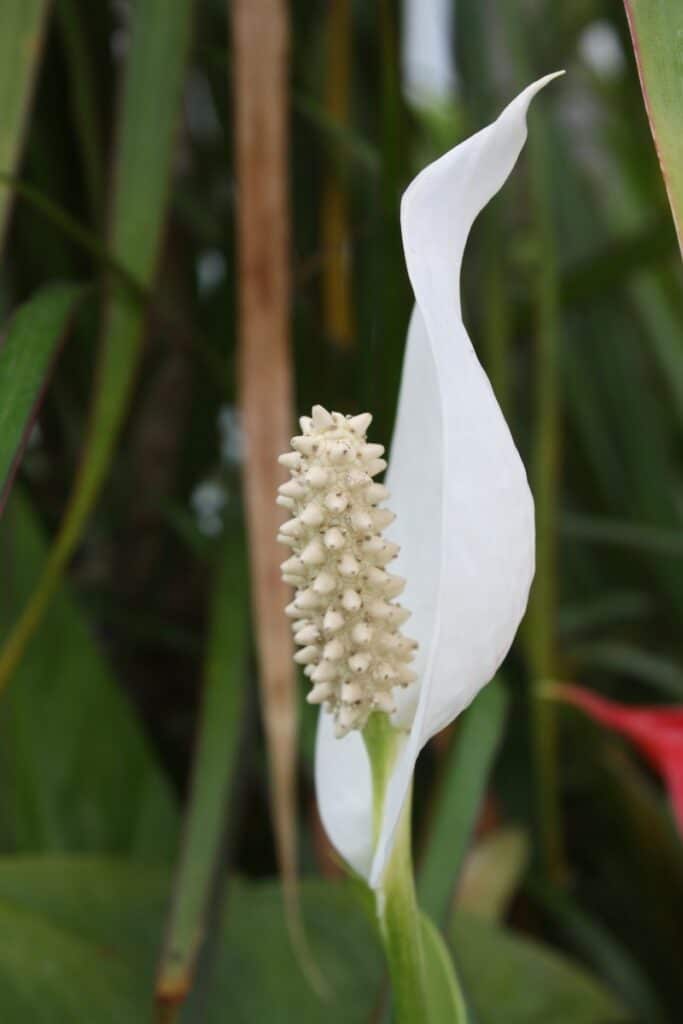
A study by NASA identified peace lily as one of the top “phytoremediation” plants. This house plant possesses properties that remove indoor air pollutants like carbon monoxide, formaldehyde, and benzene coming from furniture, paints, and varnishes.
Acetone from electronic devices and mold spores from damp areas of the house can be removed as well (2).
However, like most aroids, the spathiphyllum has oxalates known to cause irritation and burning sensation if ingested. Keep it away from children and pets by putting in safe locations in the house, away from their reach.
How to Grow Peace Lily
Here’re peace lily care tips:

Light and Water
Peace lilies like bright dappled sunlight. Their wide leaves are tough but under direct sunlight, they may burn and scorch (3). They can tolerate most bright indirect light but blooming is best and more frequent under low light. Be careful though because too much shade will result in sparse flowering.
When it comes to watering, Spathiphyllums do not perform well in waterlogged conditions. They will shrivel and their roots will rot. They like to be thoroughly watered, left on their own until the top half of the soil is dry before needing to be watered again.
No worries if you forgot to water on schedule and the leaves droop, just give them a quick bath and they will perk up once again. You may find yellow leaves when they are kept too dry for long and over time with age, these can be removed by simply cutting off the base of the leaf (2).
Temperature and Humidity
Like many tropical plants, peace lilies grow best in warm areas so temperatures should range from 65 to 75 degrees F. Do not let it drop to 50 for more than 2 days or they will start to decline.
Humidity should also be kept high to keep the leaves lively and glossy. Dry air will make brown leaf tips so if cannot be avoided, keep the potted plant on a wet pebble tray (2).
Pests and Diseases
Spathiphyllum is not a stranger to common houseplant pests like mealybugs, aphids, scale, and caterpillars. Cleaning the leaves under gentle running water will remove mild infestations.
Manual removal of bigger pests like snails and slugs can also be done. Afterwards, horticultural spray or neem oil application on the leaves will keep these pests at bay.
If you notice dark leaf spots or rust and premature yellowing on the leaves, these are symptoms of fungal disease. Isolate the plant to avoid spreading the disease then remove the infected parts and apply a mild fungicide.
Propagation and Maintenance
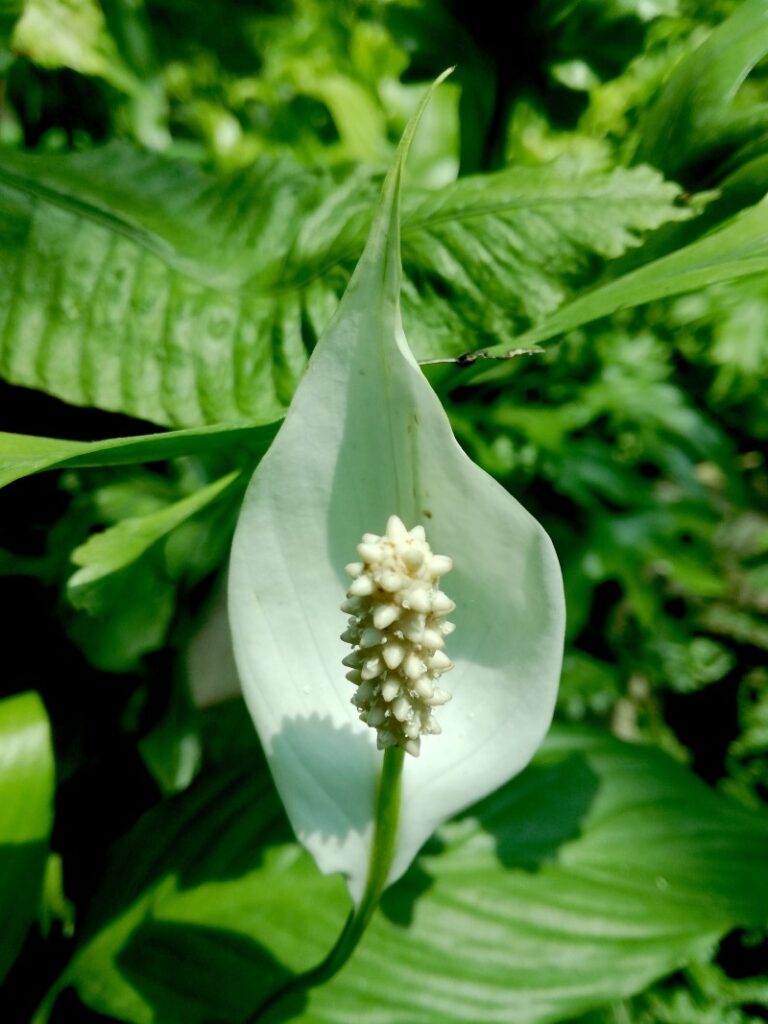
This plant establishes roots quite well and prefers to be root-bound when potted. Repotting in spring once a year is recommended to replenish soil nutrients and keep the roots well-aerated (1).
This will also give you the opportunity to divide the plant if it has overgrown its container. Transfer a bunch with enough mature leaves to pot with a well-draining, potting mix, preferably made with perlite or peat moss.
Peace Lily Yellow Leaves and Brown Tips
Getting too much light or too little light, overwatering or underwatering can cause peace lily leaves turning yellow and brown.
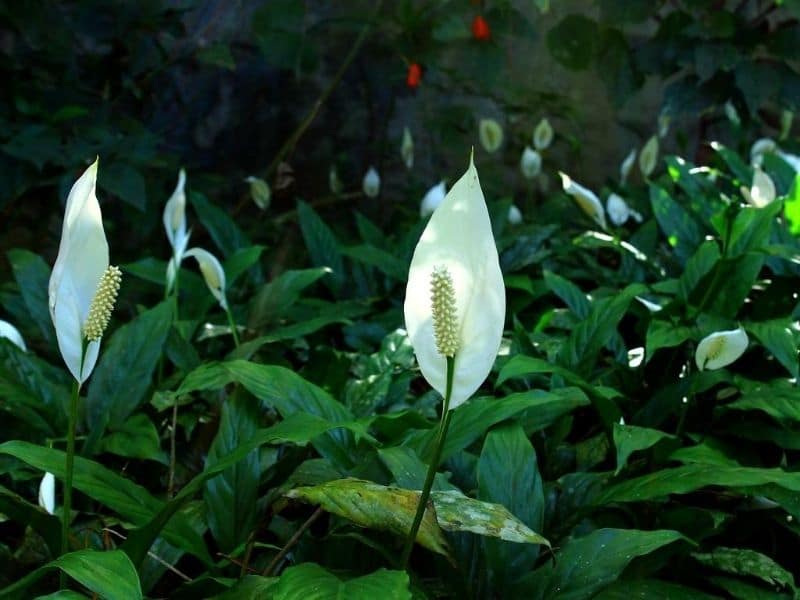
Peace lilies do not need frequent feeding unless you want it to produce more flowers but fertilize normally once every 3 months at half the application rate is enough. Do not feed new potted plants, wait a few months until the roots have established. Overfeeding can burn the leaves and turn them brown (3).
Just like any wide-leafed plant, Spathiphyllums will acquire dust over time. Wipe them off using a clean wet rag gently and with little pressure to avoid damage to the leaves (2). The green foliage is naturally glossy but spraying with a neem oil mixture will enhance the gloss and keep the plant insect-free too.
Top Varieties of Peace Lilies You Can Grow
S. ‘Sensation’
This giant variety showcases curling leaves of up to 60cm big and the plant itself can reach a height of 1.8m. It is often seen adorning malls and airports where it makes a bold statement in equally large containers. The plant also makes perfect borders along the shaded parts of the garden.
S. ‘Mojo Lime’
While most peace lilies are dark-green, this variety is refreshingly light and bright green. The color is more intense under brighter light conditions. Arranged en masse with the more common peace lilies, this variety will definitely stand out.
S. ‘Domino’
The white and muted green variegation on this spathiphyllum makes the plant pleasingly look like it has been splashed with paint. It is a very tough variety and with the leaves looking more intense under bright light.
S. ‘Little Angel’
‘Little Angel’ is a dwarf variety and a frequent bloomer which makes this spathiphyllum perfect for tables and countertops. It has a compact growth and can be repotted and divided into several new plants. The flowers can be easily spotted as they grow atop the leaves looking like an arranged bouquet.
Many plant experts agree that peace lilies and their white flowers symbolize tranquility, purity, and prosperity. See more about Peace Lily Flower Meaning and Symbolism.
FAQs
How do you keep peace lilies blooming?
To encourage peace lilies to bloom, provide them with bright, indirect light, maintain consistent watering to keep the soil evenly moist but not waterlogged, and fertilize them regularly during the growing season with a balanced fertilizer. Additionally, ensure the plant is not stressed by environmental factors such as drafts or temperature extremes.
Why do peace lilies stop flowering?
Peace lilies may stop flowering due to several reasons, including insufficient light, overfertilization, improper watering, or being pot-bound.
Can you sleep with a peace lily in your bedroom?
hile peace lilies are popular houseplants known for their air-purifying properties, some people may be sensitive to the pollen or irritants released by the flowers. Additionally, peace lilies can occasionally emit a slight fragrance, which may be bothersome to some individuals.
See more: Best soil for peace lily
References
Reference List
(1) Steams, J. 2019. The Inspired Houseplant. Sasquatch Books. P. 208.
(2) Perry, L. 2015. Easy Houseplants-The Peace Lily. University of Vermont. https://pss.uvm.edu/ppp/articles/peacelilies.html. Accessed 7 August 2020.
(3) Osterhoudt, M. 2013. Keeping it Real-Health Benefits of Indoor Plants, Which to Get, and How to Care for Them. Lulu Press Inc.
Close
Image by SaraTM/depositphotos

